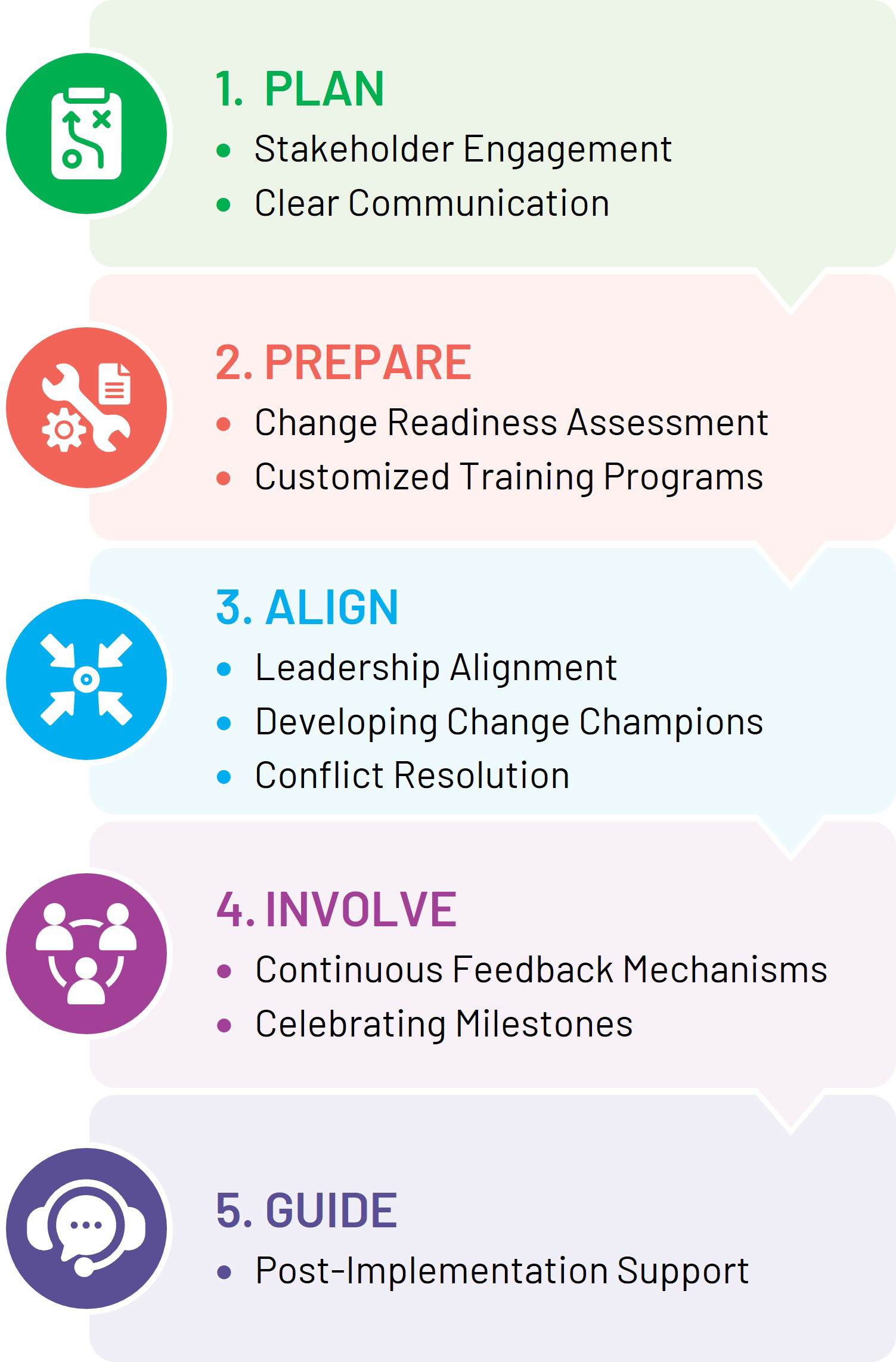Change Management: The Key to a Successful Technology Implementation

In an era defined by rapid technological evolution, state and local Health and Human Services agencies are seeking ways to enhance efficiency, improve processes, and stay ahead of the curve. The benefits of implementing cutting-edge technology solutions are undeniable, particularly when considering the potential ways in which it could revolutionize operations and improve outcomes. However, the success of any technology implementation is intrinsically tied to effective change management. Garnering adoption and acceptance of new systems and processes is challenging. The journey from deciding on a solution to integration is a delicate one, and agencies must navigate it with strategic foresight to ensure that end-users not only adopt the new technology but embrace it.
Implementing new technology is inherently a transformative process. Whether it's the adoption of new case management tools, an innovative point solution, or a total system overhaul, the introduction of new technology disrupts established routines, workflows, and ingrained habits in every corner of the agency. Recognizing that this shift is a major change and thoughtfully preparing for potential resistance is the first step toward successful implementation.

Why it matters?
No matter how groundbreaking the technology is, its true value is unlocked when users not only accept it but actively incorporate it into their daily work lives. Resistance to change is a common human reaction, and organizations must supportively acknowledge this reality. Effective change management is about understanding the complex impact of change, addressing concerns, and fostering a positive attitude towards the new technology.
This understanding can be built collaboratively with the technology vendor. The agency can work closely with their point person on the vendor side to ensure that they have a deep understanding of the changes to come, so that as resistance or concerns arise, they can effectively address it.
Communicate – Early and Often
A successful implementation requires a strong foundation, and clear communication across all levels of the agency is an integral part of that foundation. Communication is the cornerstone of successful change management. From the initial stages of planning through to the post-implementation phase, organizations must communicate transparently about the upcoming changes, explaining the purpose, benefits, and expected outcomes of the new technology. As previously mentioned, those leading the implementation on the agency side will be well-informed on all aspects of the project, so that they are able to comprehensively address concerns and provide a platform for open dialogue.
Training and Preparedness
When using any new technology, training and user-preparation are critical to ensuring adoption and therefore, return on investment. Equipping end-users with the skills and knowledge they need to navigate the new technology confidently should be a top priority for both the agency and the vendor. While it may seem easy to hold a one-and-done training session, building an ongoing process that accommodates different learning styles, addresses challenges as they arise, and continually supports users, is the most effective process. Additionally, offering various formats, such as online tutorials, workshops, and hands-on sessions, ensures a diverse range of users can effectively engage with the training. It is not only practical to leverage this style of training as it relates to adoption, but it also fosters a productive and encouraging learning environment for the users, building trust and employee satisfaction across the agency.
Engagement, At All Levels
Throughout the process of the technology implementation, it is critical to actively involve end-users in the planning stages. End-users are the key to the impact and success of the solution. Soliciting their input, gathering feedback, and considering their perspectives will set the agency up for success when exploring and implementing customizations which address the agency’s unique needs. This participatory approach allows for the identification of potential challenges early in the process, and much like dynamic, ongoing training efforts, enhances trust and cultivates a sense of ownership at all levels of the organization.
On the note of addressing the agency’s unique needs, it is important to avoid a one-size-fits-all approach to implementation. The vendor and agency must work together to consider the best process for implementation based on agency resources, time, staffing, etc. A phased approach allows for a more manageable transition and provides opportunities to address issues as they arise. Additionally, a gradual rollout minimizes disruptions to daily operations and enables the agency to fine-tune the implementation based on real-world feedback.
Don’t Stop After Implementation
It is not uncommon to see a high-level of acceptance upon immediate implementation and then have it trail off over time. For sustained and elevated acceptance, support must continue well beyond the go live date. Post-implementation, the agency and vendor should continuously evaluate the performance and impact of the technology. They should collect ongoing feedback from end-users, identify areas for improvement, and be willing to adapt the implementation strategy based on evolving needs and challenges.
CITI offers a variety of solutions for Health and Human Services (HHS) agencies, and therefore must understand the importance effective change management. In collaboration with the agency, CITI focuses on actively involving end-users in the planning process, providing comprehensive training on their solutions, and offering continuous support. This is all to ensure that the solution makes the biggest, most positive impact at all levels of the agency, from end users to leadership, and provides a significant return on their investment.
As we forge ahead into a future where technology will continue to shape the way we work, the lessons learned from effective change management will remain invaluable, ensuring that vendors and agencies alike thrive in the face of transformative technological shifts.
To learn more, visit our website at: IT Services | CITI HHS (citi-hhs.com).